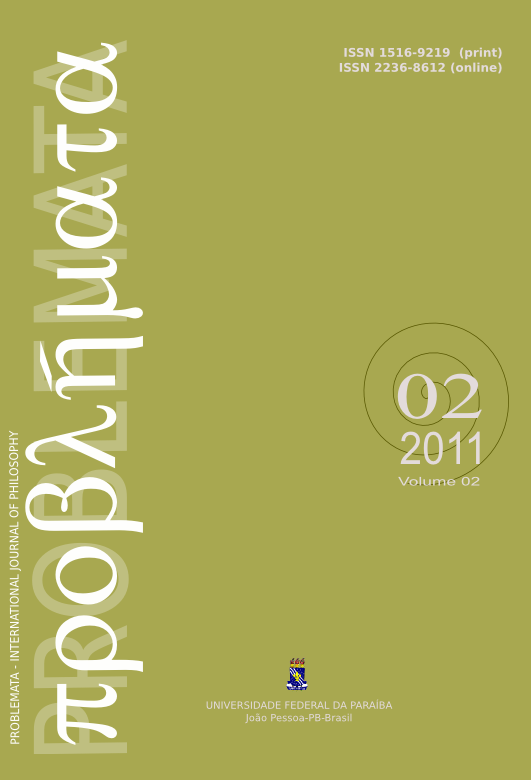VITAL FORCE AND ANIMAL MOVEMENTS: motivation of human actions on the philosophy of Hobbes<a href="http://dx.doi.org/10.7443/problemata.v2i2.10858"><i> <b>[doi: 10.7443/problemata.v2i2.10858]</b></i></a>
DOI:
https://doi.org/10.7443/problemata.v2i2.10858Keywords:
Hobbes, matéria, movimentos, ação, autoconservação.Abstract
ABSTRACT: This paper aims at investigating the reasons for human actions based on the concepts of vital force and animal movements in the philosophy of Thomas Hobbes. Therefore, it is necessary to analyze the central focus of interest of the agent, in this case relates to the preservation of himself and other desiderata around the self-preservation. In view of Hobbes, animal bodies, as is the case of man, are made up of two types of movements: one is called life (starts with the generation and continues without interruption throughout life) and the other animals (featured in acts to walk, talk, move members of the body). Since the whole body, once in motion tends to move forever unless something or some force to make it stop, so the movement animals and vital movement tend necessarily once in motion, to remain in such condition kinetic. It is, apparently, around this idea that underlies all human actions.
KEY WORDS: Hobbes, matter, motion, action, self-preservation.Downloads
Downloads
Additional Files
Published
Issue
Section
License
Authors who publish with this journal agree to the following terms:
- Authors retain copyright and grant the journal right of first publication with the work simultaneously licensed under a Creative Commons Attribution License that allows others to share the work with an acknowledgement of the work's authorship and initial publication in this journal.
- Authors are able to enter into separate, additional contractual arrangements for the non-exclusive distribution of the journal's published version of the work (e.g., post it to an institutional repository or publish it in a book), with an acknowledgement of its initial publication in this journal.
-
- Authors are permitted and encouraged to post their work online (e.g., in institutional repositories or on their website) prior to and during the submission process, as it can lead to productive exchanges, as well as earlier and greater citation of published work (See The Effect of Open Access).





